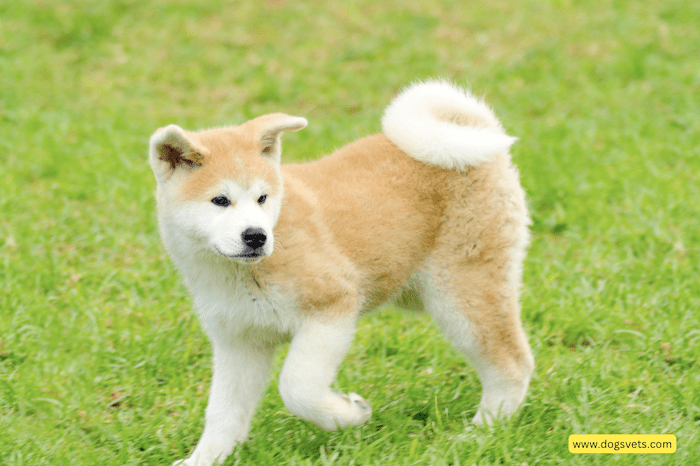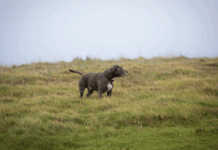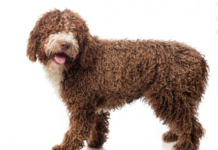Last Updated on December 14, 2023 by Dogs Vets
Why Are Akita Dogs Dangerous? + 10 Facts You Need to Know
Beneath the plush fur and noble gaze of the Akita Inu lies a breed with a complex history and temperament.
Often romanticized for their loyalty and fierce independence, Akitas can also exhibit dominant and territorial tendencies that, if left unchecked, can lead to dangerous situations.
Before welcoming this majestic canine into your home, understanding the potential risks is crucial.
Unraveling the Akita’s Past: Guardianship and Predatory Instincts
Akitas hail from the mountainous regions of Japan, where they were bred for centuries as guardian dogs and hunting companions.
Their lineage imbues them with a strong prey drive, an inherent suspicion of strangers, and a natural inclination to protect their territory.

While these traits made them invaluable watchdogs and hunting partners, they can also translate into aggression towards unfamiliar people and animals.
10 Facts That Unmask the Potential Dangers:
- Powerful Predators: Akitas possess remarkable strength and athleticism, making them formidable opponents in any confrontation. Their hunting instincts can be triggered by small animals, joggers, or even children, leading to predatory attacks.
- Dominant and Territorial: Akitas have a strong sense of ownership and may exhibit dominance towards other dogs, especially of the same sex. This can lead to territorial disputes and aggressive behavior during walks or encounters with other canines.
- Stranger Danger: Socialization and training are paramount for Akitas. Without proper exposure to different people and environments, they can develop a deep distrust of strangers, potentially reacting with aggression towards unfamiliar faces.
- Independent Thinkers: Akitas are known for their stubborn streak and independent nature. This can make them challenging to train and control, especially for inexperienced owners. Inconsistent training methods can further exacerbate their dominant tendencies.
- Silence Before the Storm: Akitas often lack the typical warning signs of aggression, such as barking or growling. They may remain calm and collected before suddenly lashing out, making them unpredictable and potentially dangerous.
- Bite Force Matters: Akitas have a powerful bite force, ranking among the top 10 strongest bites in the canine world. Even a playful nip from an Akita can cause serious injury, especially to children or vulnerable individuals.
- Not Apartment-Friendly: Akitas require ample space and exercise to thrive. Confining them to small apartments can lead to frustration, pent-up energy, and destructive behaviors, potentially increasing the risk of aggression.
- Health Concerns: Certain health conditions, such as hypothyroidism and hip dysplasia, can contribute to aggression and behavioral problems in Akitas. Regular veterinary care is crucial for maintaining their physical and mental well-being.
- Breeding Matters: Responsible breeding practices are essential for preserving the Akita’s temperament. Reputable breeders prioritize temperament testing and ensure puppies are well-socialized from an early age.
- Owner Responsibility is Key: Owning an Akita is a significant commitment. Potential owners must be prepared to invest time, effort, and resources into training, socialization, and providing a stimulating environment for their furry companion.
Understanding Akita Aggression
It’s important to remember that not all Akitas are inherently dangerous. With proper socialization, training, and responsible ownership, they can be wonderful companions.
However, ignoring the potential risks and underestimating their powerful instincts can have serious consequences.
The key takeaway is this: – Akitas are not for everyone. They require experienced owners who can provide them with the leadership, structure, and training they need to thrive.
If you’re considering welcoming an Akita into your life, do your research, understand the breed’s temperament, and be prepared to invest the time and dedication necessary for a successful and harmonious relationship.
Warning Signs of Aggression in Akitas
While Akitas often lack the typical growling or barking before attacking, they do exhibit subtle body language cues that can signal potential aggression.

Recognizing these signs early can help you de-escalate the situation and prevent harm. Here are some key warning signs to watch for:
Direct and Intense Stare:
An Akita locking eyes with you for an extended period, especially with a hard, unwavering gaze, can be a sign of dominance or challenge. They may also tilt their head slightly, further emphasizing their focus on you.
Stiff Posture and Raised Hackles:
An Akita standing rigidly, with its fur raised along its back (hackles), indicates tension and potential aggression. This is often accompanied by a lowered head and flattened ears, further conveying a sense of threat.
Lip Curls and Snarling:
While a playful smile in some dogs, a curled lip in an Akita can be a warning sign. If accompanied by snarling, which is a deep, guttural growl, it indicates imminent aggression.
Tail Carriage:
A wagging tail is often seen as a sign of happiness in dogs, but in Akitas, a stiff or high tail held rigidly can signal tension or potential aggression.
Conversely, a tucked tail between the legs can indicate fear or submission, but it’s important to note that this can also be a precursor to aggression in some cases.
Whining and Growling:
While whining can sometimes be a sign of affection or seeking attention, in Akitas, it can also be a low-level warning growl. This is especially true if accompanied by other body language cues like flattened ears or raised hackles.
Changes in Vocalization:
Sudden changes in vocalization, such as a shift from playful barking to deep growls, can be a sign of an impending attack. Akitas may also emit a high-pitched scream or bark just before lunging.
It’s important to remember that these are just some of the warning signs of aggression in Akitas.
Every dog is an individual, and their behavior can vary. If you notice any of these signs, it’s best to seek professional help from a trainer or behaviorist experienced with the breed.
By understanding the potential risks and warning signs, you can create a safe and harmonious environment for yourself, your Akita companion, and those around you.
Remember, responsible ownership and early intervention are key to preventing aggression in any dog breed, including Akitas.
I hope this information is helpful! Let me know if you have any other questions.
FAQs for the Curious Canine Enthusiast:
1. Are Akitas more aggressive than other breeds?
Studies suggest that Akitas are more prone to dominance-related aggression than some other breeds. However, any dog can exhibit aggression if not properly trained and socialized.
2. Can Akitas be trained to be non-aggressive?
Early socialization, consistent training, and positive reinforcement techniques can significantly reduce the risk of aggression in Akitas. However, it’s crucial to seek guidance from a qualified trainer experienced with the breed.
3. Are Akitas good with children?
Akitas can be wonderful companions for children, but proper supervision is always essential. Their strong prey drive and independent nature pose potential risks, especially with young children.
Fact Check
We strive to provide the latest valuable information for pet lovers with accuracy and fairness. If you would like to add to this post or advertise with us, don’t hesitate to reach us. If you see something that doesn’t look right, contact us!

















